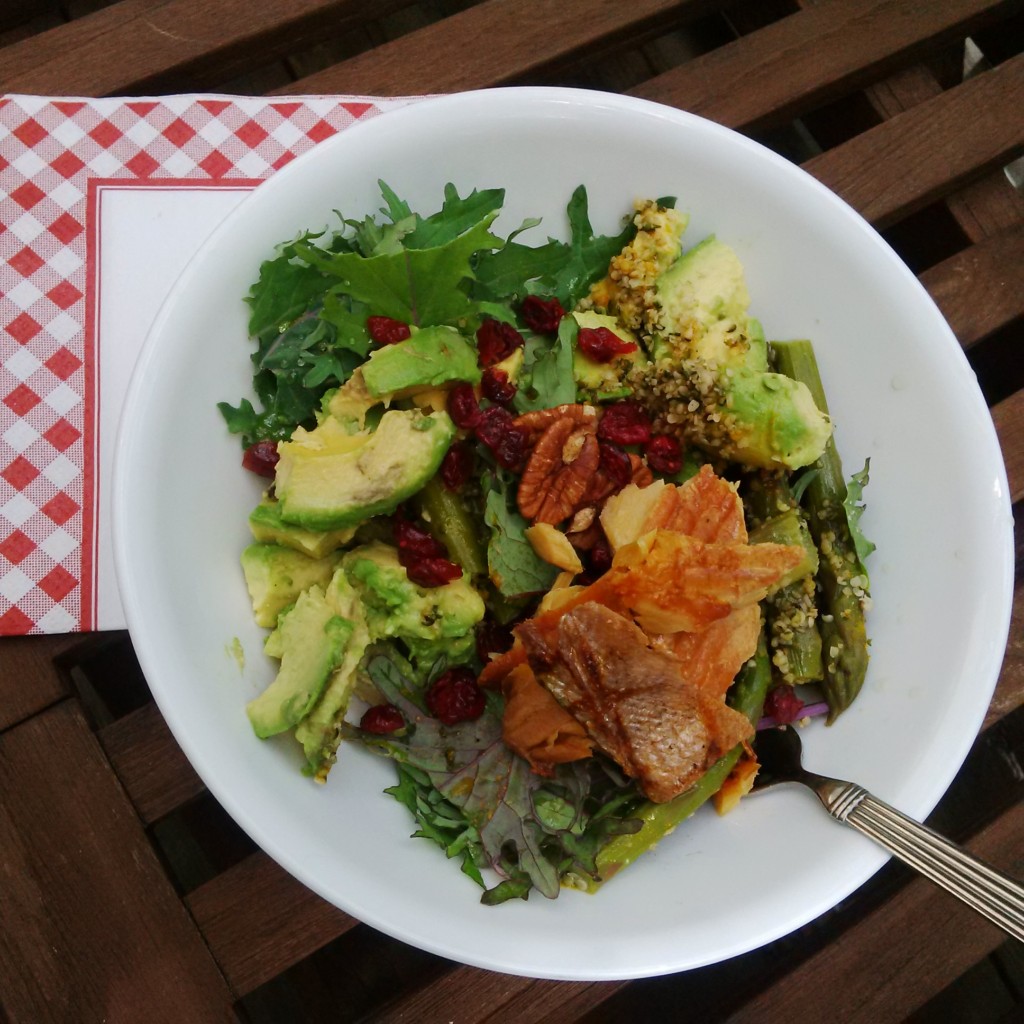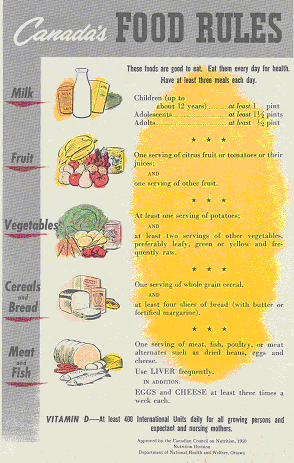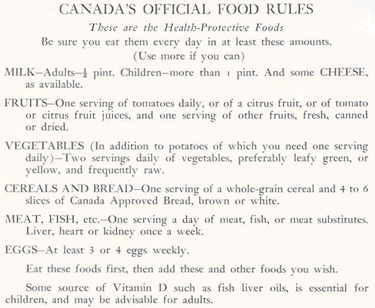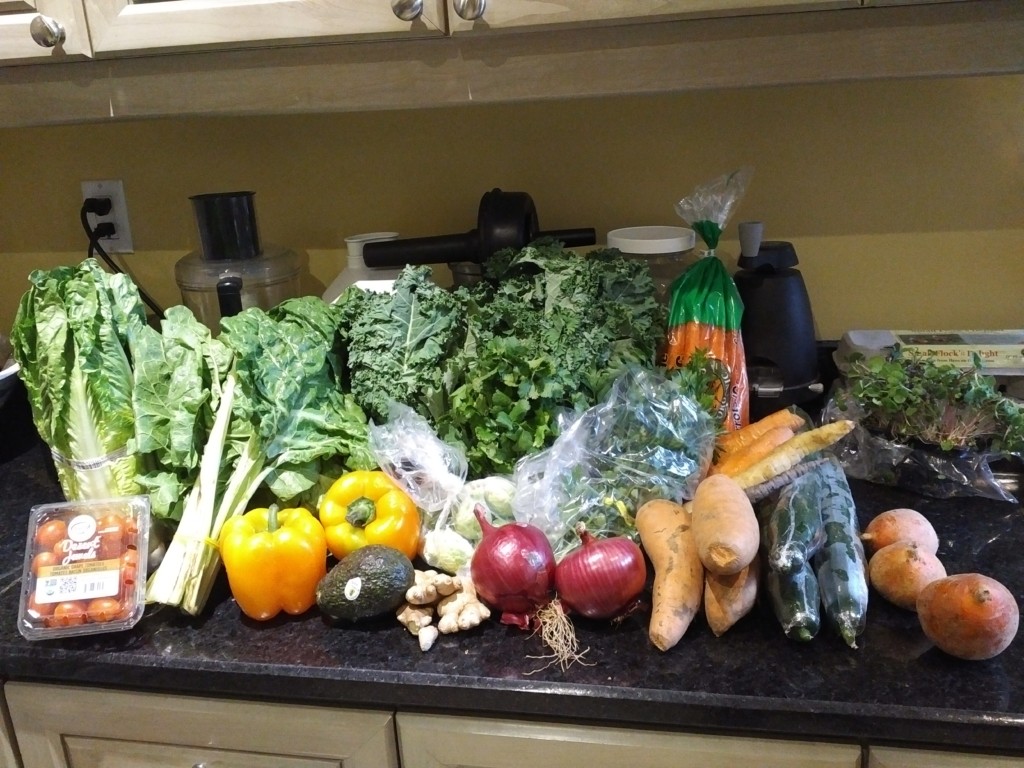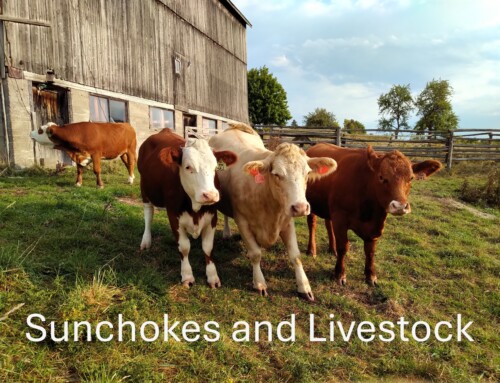 Canada’s Food Guide Analysis
Canada’s Food Guide Analysis
The Canada’s Food Guide has evolved over the decades since it was first introduced in July 1942. The main purpose was to guide people on the essential nutrients from food for their good health.
It was a start and surely a number of changes have occurred since 1942, so many, that one could get lost in the information on the website.
Live to eat; eat to live well.
Let’s explore the various elements of the Canada’s Food Guide which include: Convenience Foods, Award Winning Beets, Canada’s Food Guide Analysis, its Merits and Recommendations.
Convenience Foods
From farm to store, this changes some of the food we consume: from produce to processed packaged food.
In my opinion, some recommendations are unhealthy, for example, use canola oil (a refined vegetable oil) in your cooking. Processed and refined foods are a convenience for storing our food and keeping the food shelf stable (i.e. added preservatives, refined vegetable oil, etc.). Shelf stability does not necessarily mean healthier food; safe food from growing mold, yes. Other foods are shelf stable naturally, like dried fish and meat, fruits, nuts, etc. Those foods plus the foods that are canned go back a long time and were needed when winter weather didn’t permit fresh food all year long. If not dried or canned, root cellars kept certain foods longer (i.e. root vegetables).
I have tasted mold in raw nuts, coconut oil products and frozen berries. These foods will go rancid under the right conditions. For frozen fruit, the fruit was probably going moldy before freezing. Berries turn moldy easily. In nature, if not eaten by the animals and is left to ripen too long will fall to the ground to decompose.
The other side of vegetable oil is that it is cheap but does this cost our health?
Some people are going to the local farmer’s market to purchase local foods both in season and freshly picked.
My Award Winning Beets
Did I ever tell you about winning a 1st ribbon in the Schomberg Agricultural Fair for my pickled beets? Second for my canned pears. Both were a favourite of friends and families. I would say “what can I bring over for dinner.” They would say “some of your pickled beets if you still have some.” The pears, well, you had to be invited over for dinner or be in the right house at the right time. My point here is canning food is coming back and a sure way to preserve food when it is not in season. Back to the guide.
Canada’s Food Guide Analysis
Assessing the Canada’s Food Guide on its merits and other considerations:
I think it is worth mentioning that there might be many hands in the fire on this one. Many years, I heard the Dairy Board was instrumental in creating the Canada’s Food Guide. Also, the oilseed lobbyists have a hand in leaving in the refined vegetable oils. Companies do have a right to speak up for their business as much as people have a choice to buy good healthy foods.
By George (not Boy George, RIP), did you ever witness how the vegetable oil refineries produce a liter of vegetable oil (i.e. canola, soybean, sunflower, safflower, etc.)? Ask yourself this, how long can containers of vegetable oil last in your cupboard? Have you ever tasted a teaspoon of it straight out of the container?
I don’t blame the manufacturers. They DO have to use heat in order to get the oil out of the seed easily to produce bulk oils to meet demand. Since heat affects this whole food, they have to bleach and deodorize it so it looks acceptable and does not smell. Recently during one of my presentations, I ask a group of ladies in the audience if they would consume vegetable oil if the label read refined, bleached and deodorized. All said “yuck.”
Merits
- Since 1942, Vitamin D has been highly recommended. There is now the mention of other essential nutrients for our health and vitality.
- The mention of a variety of whole grains such as oatmeal and brown rice. But not all can consume grains due to gluten intolerances, etc.
- Mentions Kefir under dairy. This contains healthy gut bacteria which we would be lacking in processed, heated foods.
- There is a Canada’s Food Guide for the First Nations, Inuit, and Métis.
- The Canada’s Food Guide is available in 10 languages.
- Drinking water regularly, the benefits of being active, and advice for different ages.
- Information for educators and downloadable pdfs.
Recommended Improvements
The last time I checked, I don’t have much pull with Health Canada. This is where you make the choice. Check things out for yourself with an air of curiosity. Let’s explore some of the considerations I would recommend for the Canada’s Food Guide.
Several considerations for the Canada’s Food Guide’s next edition:
- Rewrite the section on Oils and Fats. Full fat foods are recommended for good health as long as the natural ratio is present and certain foods in moderation. The Canada’s Food Guide now recommends low fat, highly processed oils that are refined bleached and deodorized (such as Canola, Soybean and margarines), and limits saturated fats (without recommended amounts) which are more stable than unsaturated fats. Moderation is important in any food group. I would not recommend using unsaturated fat for cooking due to oxidation which a cause of inflammation which is part of every disease including heart disease, diabetes and cancer.
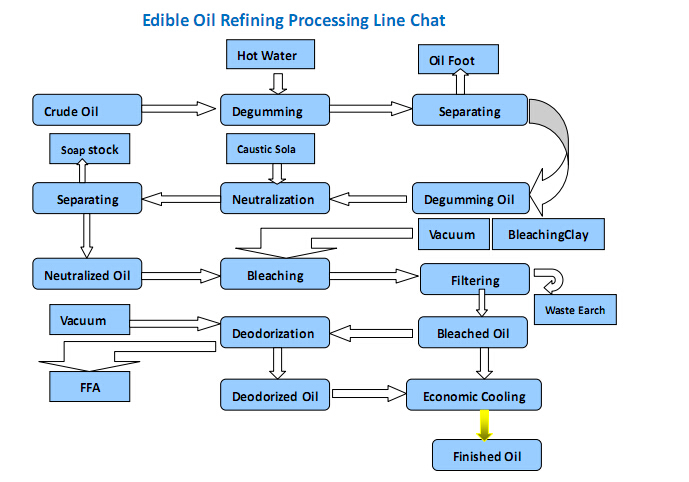
- Eliminate 100% Juice from the Vegetables and Fruits as most store bought juice is pasteurized destroying nutrient value. Juice versus the whole food will elevate blood sugars. The Vitamix comes to mind as a way to enjoy a whole food juice/smoothie.
- Milk is still its own food category when a number of people cannot consume milk and dairy products. This food is also processed and a different food than it used to be (genetically modified, the introduction of antibiotics, etc.) but they do mention Kefir.
- The First Nation’s guide has a section on limiting candy, potato chips, pop, etc. Include this in all Canada’s Food Guides.
- Cold pressed olive oil and other oil choices could be mentioned alongside the canola oil in the recipe. They do mention olive oil but even this oil can be refined and cheaply made or cut with other oils.
- Reintroduce organ meats such as liver, heart and kidney (1942). Animals do need to be raised on their natural diet.
Summary
With 20 years of working in food processing, the two key differences with buying foods today is the amount of processing for self stability and distribution, and the quality of the food including the foods fed to the animals, fish, poultry, etc. in commercial farming. There are regulations for foods and even the Farmer’s Market sellers have to abide by them.
Since 1942, a lot has changed with the Canada’s Food Guide (aka Canada Food Rules). For better or for worse, they now call it a guide instead of rules SO let’s use it only as a GUIDE. ‘Canada’s Food Guide’ will evolve but there have only been several changes in the past 80 years. Let’s not wait for changes to select healthier wholesome foods.
Learning to read labels and avoiding purchasing foods where you cannot pronounce the ingredients is a starting point. Whole foods including raw foods were mentioned in the 1942 guide as ‘frequently raw’. These are two good steps in the right direction. Holistic Nutritionists will be aware of other considerations for your health and your unique situation whether that includes health conditions or prevention.
For additional guidance, feel free to reach out.

Cheryl Millett
Champion for your better health…
Before the age of 20, it never dawned on me that what I chose to put in my mouth would have such a dramatic effect on my wellbeing.
On my path of discovery, I learned that our eating choices directly affected how much energy we have first thing in the morning or that it would build our immune system strength during flu season. Part of it was coming to understand how gentle nutritional cleansing directly helped overcome my health challenges. People keep telling me how beautiful my skin is or how I look younger.
As my studies continued, it became obvious that there is an intrinsic connection between the mind, body and spirit which directly affects our health and happiness. Also learned that Omegas are another critical piece of the wellness puzzle. I became convinced when the Auum omegas alone turned on some switches in my brain in just one day.
I have developed a deep appreciation for the wonderful miracle workers our bodies are in the recovery process. Our bodies have a natural intelligence. I am passionate to share the connection between nutrition and wellness in my practice and my presentations.
Links
http://hc-sc.gc.ca/fn-an/food-guide-aliment/context/fg_history-histoire_ga-eng.php


